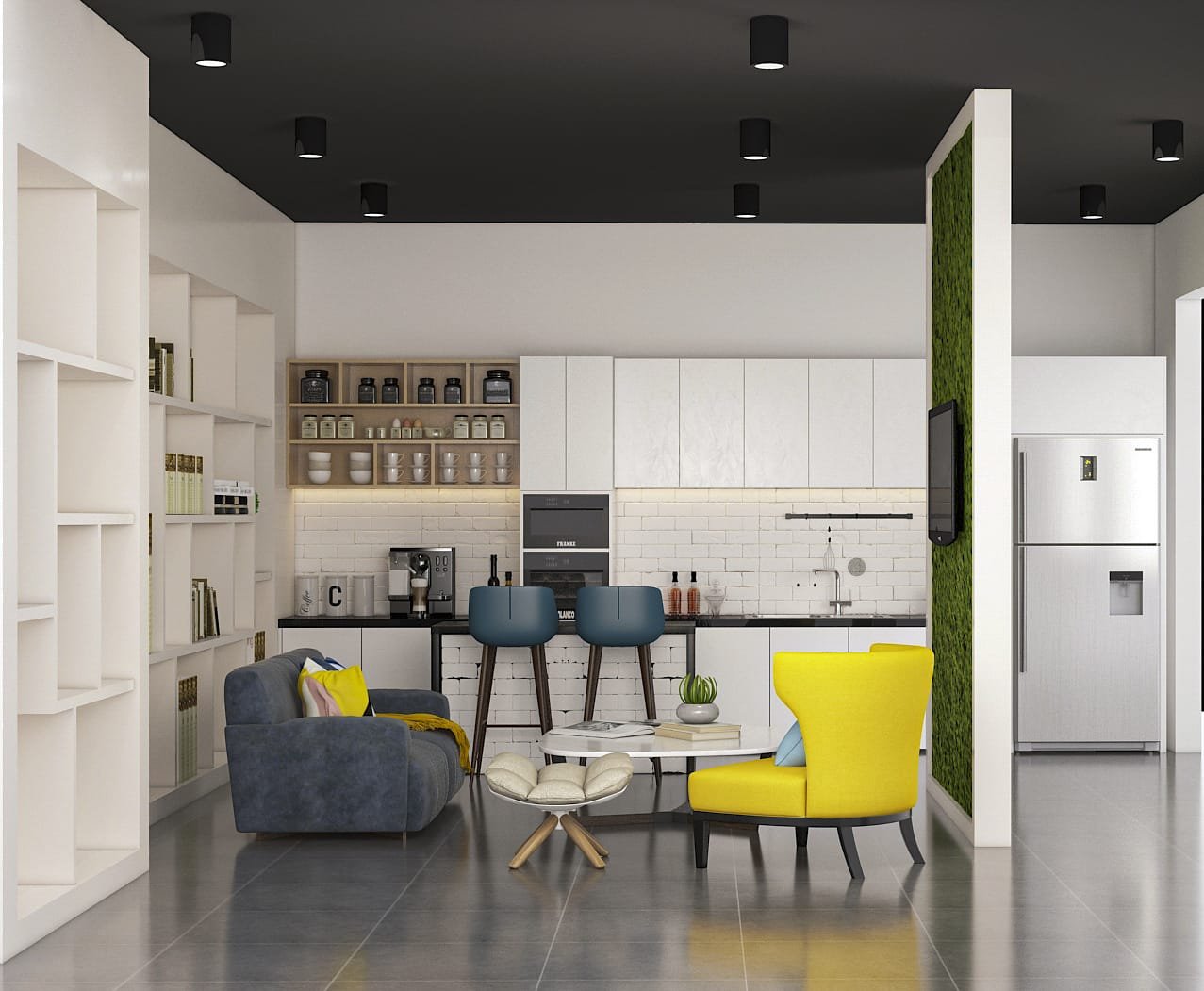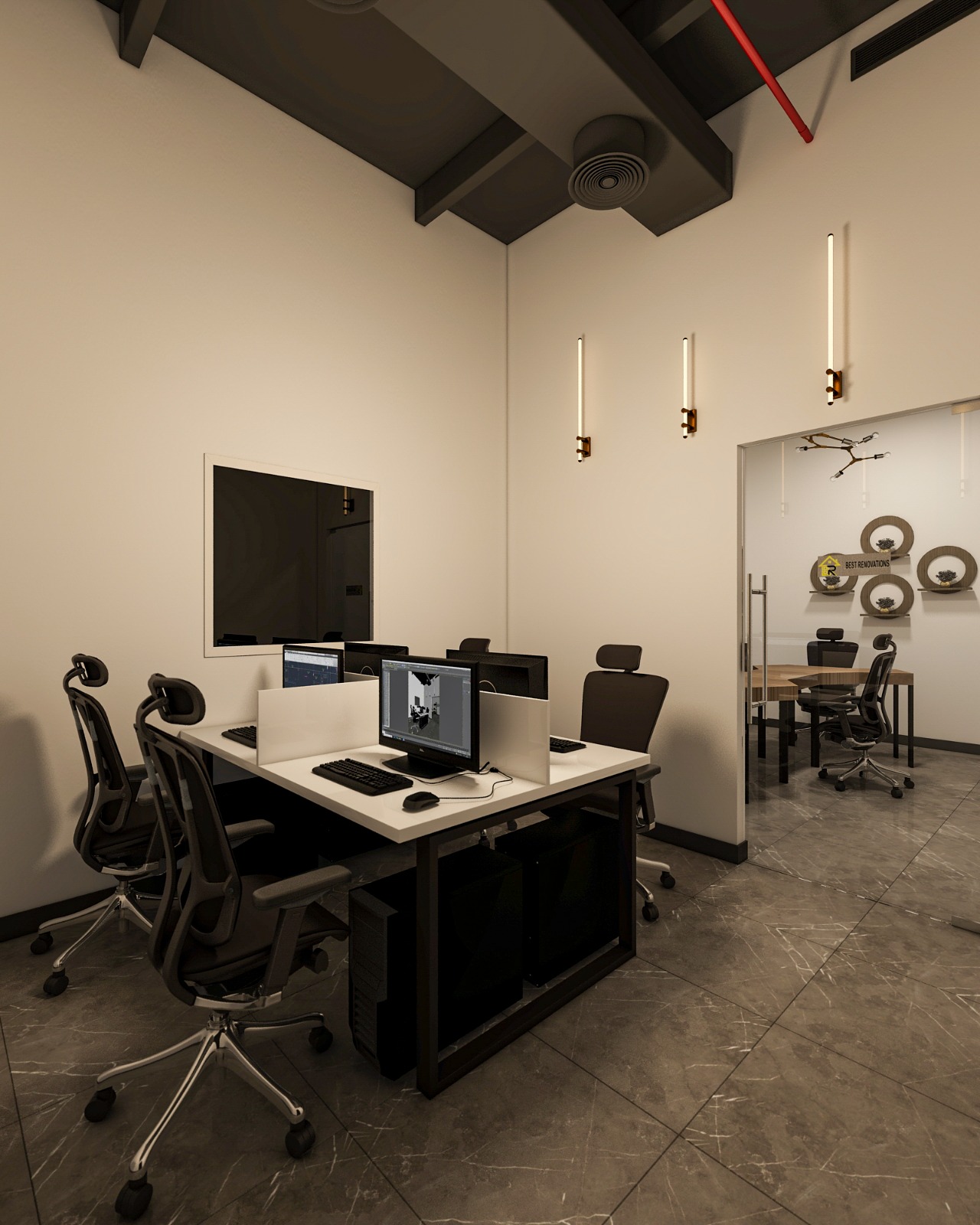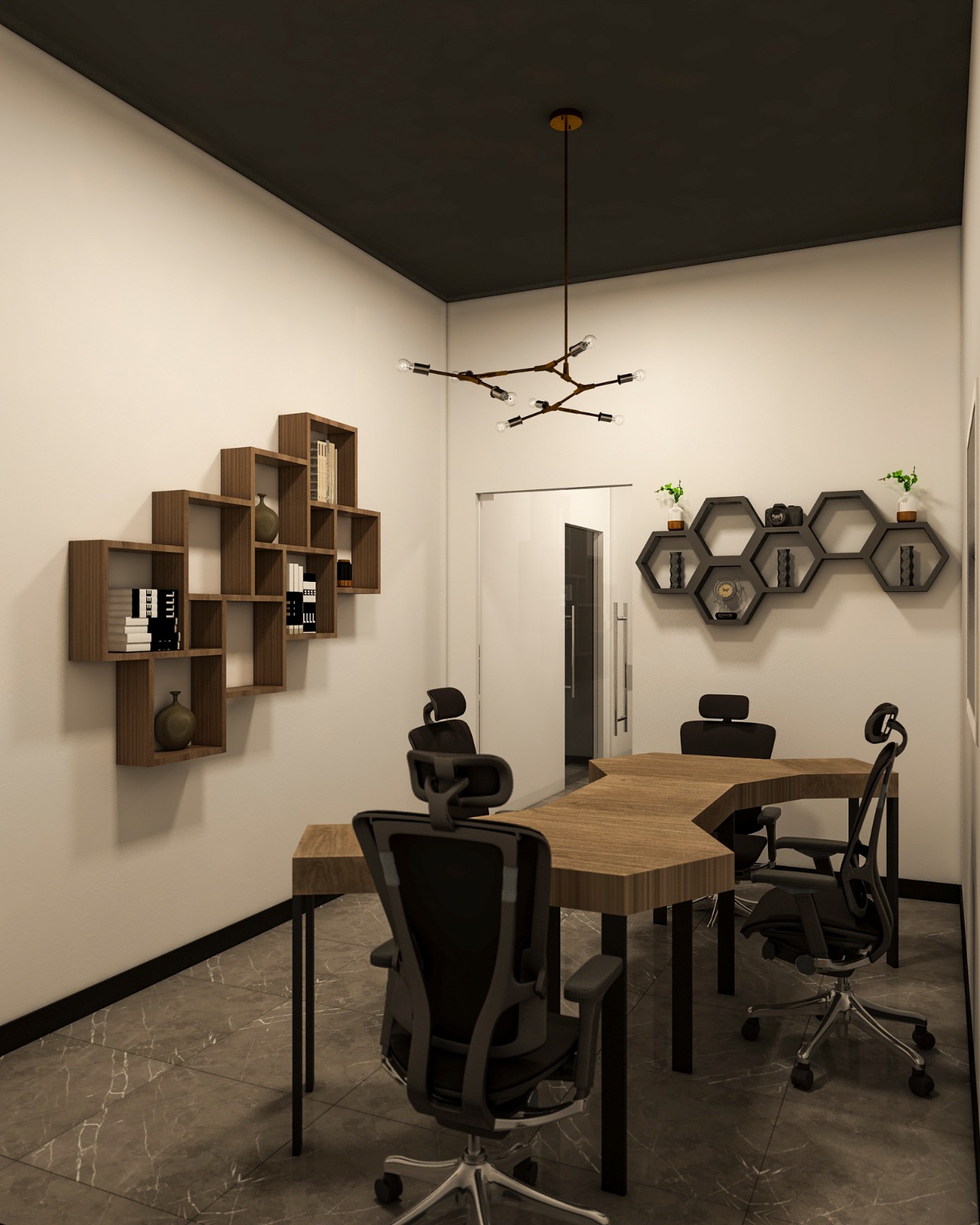
Designing Your Company’s Office in Dubai
Designing Your Company’s Office in Dubai
When it comes to creating a thriving business environment, one of the critical aspects that should never be overlooked is the office space. The design and layout of your office not only impacts the productivity of your employees but also reflects the company’s image. Dubai, a vibrant and dynamic city, offers a unique blend of traditional and modern design elements. In this article, we will explore how to design your company’s office in Dubai, focusing on creating a workspace that fosters creativity, productivity, and a sense of identity.
1. Understanding Dubai’s Office Design Trends (H1)
Before you embark on your office design journey, it’s essential to grasp the current office design trends in Dubai. This includes embracing the fusion of tradition and modernity, incorporating sustainable elements, and prioritizing open and collaborative spaces.
1.1 Tradition Meets Modernity (H2)
Dubai’s unique cultural heritage blends seamlessly with its ultramodern environment. Learn how to incorporate traditional Arabic design elements with a contemporary touch.
1.2 Sustainability Matters (H2)
Green, eco-friendly designs are on the rise in Dubai. Discover how to create an office space that’s both aesthetically pleasing and environmentally responsible.
1.3 Embracing Openness (H2)
Open-plan layouts are gaining popularity. Explore the benefits of open spaces and how they can enhance your office’s design.
2. Planning Your Office Layout (H1)
The layout of your office plays a pivotal role in shaping the work atmosphere. Let’s delve into the details of how to plan the optimal office layout for your business in Dubai.
2.1 Identifying Your Company’s Culture (H2)
Every company has its own unique culture. Determine what your company values and reflect it in your office design.
2.2 Space Allocation (H2)
Allocate space effectively by considering factors like the number of employees, departments, and functional areas within your office.
2.3 Workstations and Seating Arrangements (H2)
Explore different workstation and seating options to create a comfortable and functional workspace.
2.4 Meeting and Collaboration Spaces (H2)
Design meeting rooms and collaborative spaces that promote creativity and communication.
3. Choosing the Right Color Palette (H1)
Colors can significantly influence the mood and productivity of your employees. Learn how to select the perfect color palette for your Dubai office.
3.1 Incorporating Arabic Influences (H2)
Discover how Arabic color palettes can add a touch of local culture to your office design.
3.2 Modern Aesthetics (H2)
Explore contemporary color trends and how they can be applied to create a fresh and inviting workspace.
4. Lighting and Ambiance (H1)
The right lighting can transform your office space. Learn how to use lighting to create an inviting and functional workspace.
4.1 Natural Light (H2)
Maximize natural light sources and their benefits for your office environment.
4.2 Artificial Lighting (H2)
Understand the importance of artificial lighting in creating a well-lit and appealing workspace.
5. Incorporating Greenery and Nature (H1)
Bringing nature indoors can have a positive impact on your office’s ambiance and air quality.
5.1 Indoor Plants (H2)
Explore the world of indoor plants and how they can enhance the aesthetics and air quality in your office.
5.2 Vertical Gardens (H2)
Consider incorporating vertical gardens, a growing trend in Dubai, to add a touch of nature to your office.
6. Furniture and Decor (H1)
The choice of furniture and decor is pivotal in office design. Let’s delve into the details of selecting the right pieces for your Dubai office.
6.1 Balancing Aesthetics and Functionality (H2)
Find a perfect balance between visually appealing furniture and functional pieces to ensure comfort and productivity.
6.2 Arabic-inspired Decor (H2)
Discover how Arabic-themed decor can add character to your office space.
7. Customization and Branding (H1)
Your office should reflect your company’s identity. Learn how to incorporate branding and customization elements.
7.1 Company Logo and Colors (H2)
Incorporate your company’s logo and colors into the office design to reinforce your brand.
7.2 Wall Art and Graphics (H2)
Explore the possibilities of using wall art and graphics to communicate your company’s story and values.
8. Technology Integration (H1)
In a rapidly evolving business world, technology is crucial. Ensure your office is tech-savvy.
8.1 Connectivity and Infrastructure (H2)
Create a seamless digital environment with efficient connectivity and infrastructure.
8.2 Smart Office Solutions (H2)
Explore the world of smart office solutions, including automation and IoT, to enhance productivity.
9. Budget and Cost Considerations (H1)
Every project has financial limitations. Learn how to manage your budget effectively while designing your Dubai office.
9.1 Prioritizing Investments (H2)
Identify which aspects of your office design deserve more significant investments and where you can economize.
9.2 Cost Control Strategies (H2)
Discover cost-effective strategies to ensure you stay within your budget while achieving a fantastic office design.
10. Local Regulations and Permits (H1)
Dubai has specific regulations for office design and construction. Make sure you are aware of them to avoid any legal issues.
10.1 Building Codes and Guidelines (H2)
Understand the local building codes and guidelines that apply to office design in Dubai.
10.2 Permit Acquisition (H2)
Navigate the process of obtaining permits and approvals for your office construction.
11. Hiring a Professional Designer (H1)
Consider whether hiring a professional office designer is the right choice for your project.
11.1 Benefits of Professional Designers (H2)
Explore the advantages of hiring a professional office designer and how they can elevate your project.
11.2 DIY vs. Professional Design (H2)
Decide whether to embark on a DIY office design project or enlist the help of experts.
12. Office Maintenance and Sustainability (H1)
After the initial design, maintaining your office and ensuring its sustainability is crucial.
12.1 Regular Maintenance (H2)
Implement a routine maintenance plan to keep your office looking fresh and functional.
12.2 Sustainable Practices (H2)
Embrace sustainable practices that benefit both your business and the environment.
13. Employee Feedback and Adaptation (H1)
Feedback from your employees is invaluable. Learn how to incorporate their suggestions for continuous improvement.
13.1 Surveys and Feedback Channels (H2)
Set up channels for employees to provide feedback and suggestions for enhancing the office environment.
13.2 Ongoing Adaptation (H2)
Be open to making changes based on employee feedback to ensure a harmonious work environment.
14. Measuring the Impact (H1)
Once your office is designed and in use, measure its impact on your company’s performance and employee satisfaction.
Designing your company’s office space is a crucial task that can significantly impact the productivity, culture, and overall success of your business. A well-designed office not only enhances the work environment but also reflects your company’s values and brand identity. Whether you’re starting from scratch or looking to renovate your existing workspace, Best Renovation here are some key considerations and steps to guide you through the process.
Define Your Goals and Objectives
Before diving into the design process, it’s essential to establish clear goals and objectives for your office space. Consider what you want to achieve with the design:
- Enhance Productivity: Do you aim to create a workspace that boosts employee productivity and creativity?
- Foster Collaboration: Are you looking to encourage teamwork and innovation among your employees?
- Reflect Company Culture: Do you want your office design to align with your company’s values and culture?
- Attract Talent: Is your goal to attract and retain top talent by offering an attractive and comfortable workspace?

Best Renovation Understand Your Space and Budget
Evaluate the physical space you have and determine how it can best be utilized. Consider the size, layout, and location of your office. Take into account the available budget for the design and construction. Ensure that your vision aligns with your financial resources to avoid overextending.
Gather Input and Feedback
Engage your employees in the design process by gathering their input and feedback. Conduct surveys or hold brainstorming sessions to understand their preferences and needs. Involving your team will not only result in a more inclusive design but also improve employee satisfaction.
Create a Functional Layout
Design a layout that promotes efficiency and functionality. Consider the placement of workstations, meeting rooms, common areas, and amenities. Ensure that the flow of the office supports the tasks and interactions that occur regularly.
- Open Workspaces: Consider open-plan workspaces to encourage collaboration and communication.
- Private Spaces: Include private offices or quiet zones for focused work and meetings.
- Ergonomics: Invest in ergonomic furniture and equipment to enhance comfort and well-being.

Incorporate Branding and Aesthetics
Your office should reflect your company’s brand identity. Use your logo, colors, and branding elements to create a cohesive and visually appealing design. Choose a color scheme and décor that aligns with your brand’s image.
Prioritize Employee Well-being
Consider the well-being of your employees in the design. Provide ample natural light, ventilation, and ergonomic furniture. Create spaces for relaxation, meditation, or exercise to promote physical and mental health.
- Biophilic Design: Incorporate plants and natural elements to connect employees with nature.
- Wellness Rooms: Designate areas for wellness activities such as yoga or meditation.
Incorporate sustainable design principles to reduce your environmental footprint. Use eco-friendly materials, energy-efficient lighting, and recycling programs. Sustainable design not only benefits the environment but also saves costs in the long run.

Technology Integration
Ensure your office is equipped with the latest technology to support modern work processes. Invest in high-speed internet, video conferencing facilities, and smart office solutions.
Design Implemented
Once the design is implemented, gather feedback from employees and assess how well the space is meeting your objectives. Make necessary adjustments and improvements based on feedback.

Conclusion
In conclusion, designing your company’s office is a multifaceted task that requires careful planning and consideration. By setting clear goals, involving your team, and prioritizing functionality and aesthetics, Best Renovation can create a workspace that not only enhances productivity but also reflects your company’s values and culture.
[ad_2]




